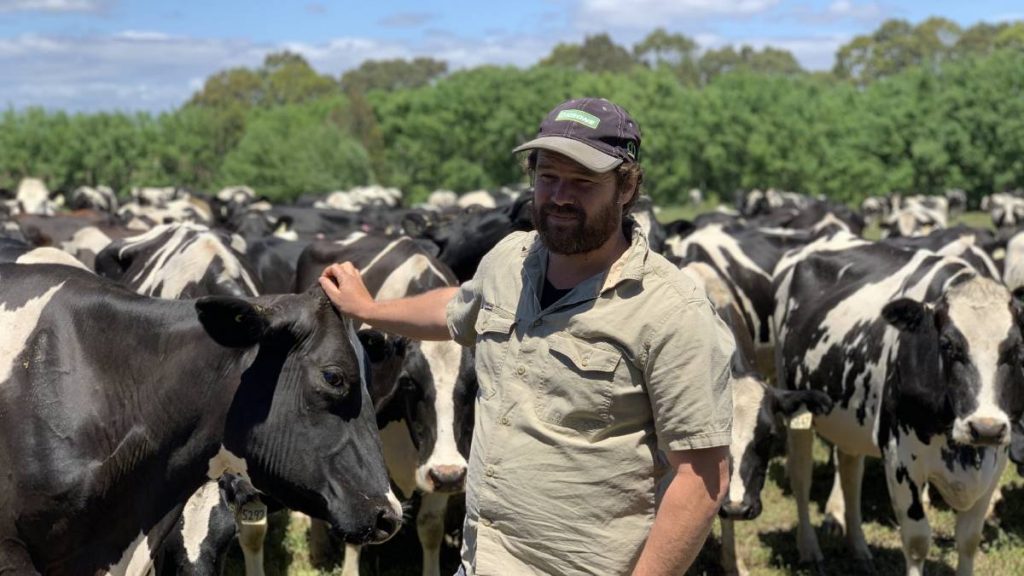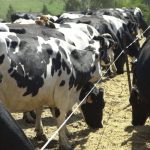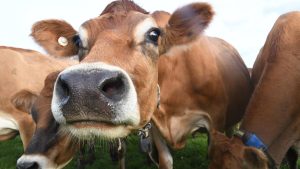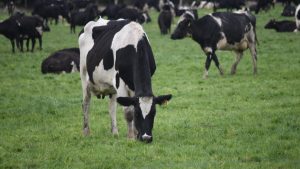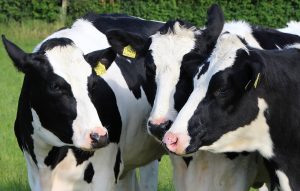
The third-generation farmer milks 350 cows on 160 hectares in Bairnsdale, Vic. With a partial mixed ration system and a split-calving pattern, Mr Evans saw an opportunity to reduce his costs using more regular herd testing.
“We had always used blanket antibiotic dry cow therapy, but we noticed that a lot of our cows had consistently low bulk milk cell counts year after year,” Mr Evans said.
“I figured it was pointless to give blanket antibiotic dry cow therapy and saw this as an opportunity to save some money.”
Quick and easy herd testing
With a 60-unit rotary, Mr Evans said he was surprised how easy it was to conduct herd testing using electronic meters.
He is now able to test his entire herd in an extra 30 minutes every two months, providing up-to-date herd data six times per year.
“I couldn’t believe how easy it was to do herd testing and make decisions using the data,” Mr Evans said.
“Now I can maintain a low cell count herd and reduce my use of antibiotics.”
I always assumed it would take a lot of work to maintain a low cell count, but it just doesn’t.
– Huw Evans
As a result, Mr Evans now only treats one in four of his cows, reducing his treatment expenses while still maintaining an average bulk milk cell count of less than 100,000 cells/millilitre.
He even received a gold award in the 2018 Dairy Australia Milk Quality Awards as a top 100 dairy farmer nationwide for milk quality.
“I always assumed it would take a lot of work to maintain a low cell count, but it just doesn’t,” Mr Evan said.
Identifying selection criteria
Using resources available to all dairy farmers through Dairy Australia’s globally recognised Countdown program, Mr Evans identified the key steps he would take to select the cows in need of antibiotic dry cow therapy.
He also consulted with his veterinarian to tailor the advice to his farm and determine a multi-step approach appropriate for his herd.
“The first step is removing the cows who have consistently low cell counts and no clinical cases of mastitis – they’re easy to identify using herd data, and they’re the first we cross off the list,” Mr Evans said.
Countdown resources then recommend treating any cow with a history of clinical mastitis.
Mr Evans will also treat any cow with a cell count of more than 80,000 cells/ml, even if she does not have a history of clinical mastitis.
All cows receive internal teat sealants even if they do not require dry cow therapy.
Focusing on hygiene
For Mr Evans, informing his decision-making using more regular herd testing has been complemented by a strict focus on hygiene during dry cow therapy.
Prior to applying dry cow treatment, he thoroughly cleans each teat and uses alcohol wipes to administer the treatment and the teat sealant, further reducing the risk of mastitis and keeping his cell count low.
Access resources through Countdown
Herd decision-making is crucial to the long-term viability of dairy farm businesses.
Decisions made today can have lasting impacts on farm profitability and sustainability.
Dairy Australia provides globally recognised programs, training and resources to dairy farmers that enable them to make critical decisions at key points throughout the season.
Through its Countdown program, Dairy Australia works with dairy farmers to provide guidelines and training on mastitis prevention and control, including practical tips for adopting selective or part-herd dry cow therapy.
Access the resources at dairyaustralia.com.au/mastitis.
Reducing antibiotic resistance
Combating antimicrobial resistance (AMR) is a key global health and economic priority for Australian agriculture.
Without significant intervention, antibiotics may not be able to treat some routine infections because bacteria will develop the ability to survive in their presence.
The Australian Dairy Industry Sustainability Framework notes antimicrobial resistance as a priority for Australian dairy farmers, with a target of using antibiotics responsibly – as little as possible, as much as necessary – to protect the health and welfare of our animals.
